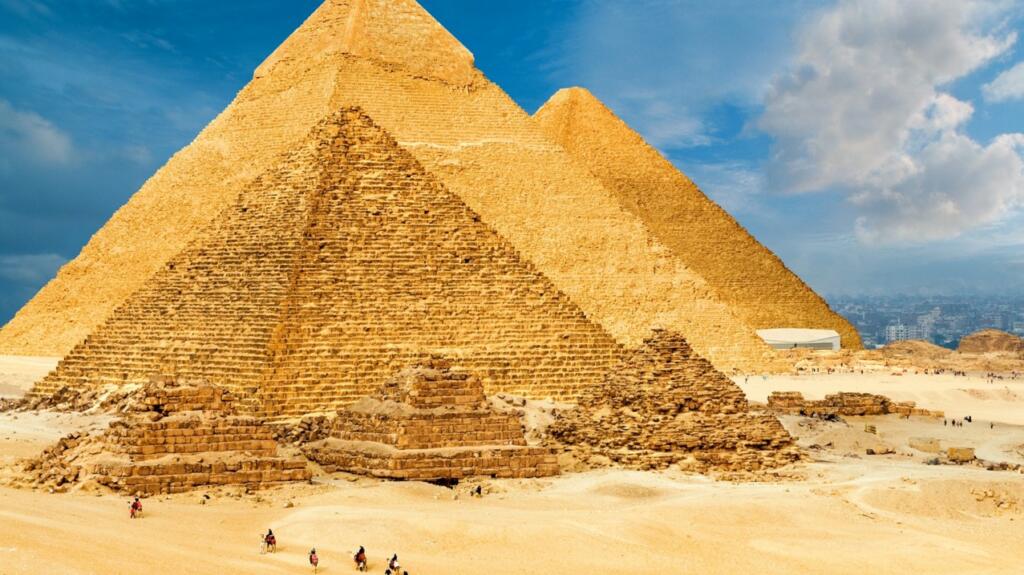A lost 4500-year-old sun temple has been unearthed by archaeologists in Northern Egypt. The temple dates back to the mid-25th century BCE and owing to its mud walls. According to a CNN report, Egyptian kings are not known to have built temples with bricks and then rebuilt them later using stone.
Egyptian kings worshipping the sun in Sanatan way:
The Sanatan Dharma has been worshipping the Sun god since time immemorial. Lord Ram of Ayodhya belonged to the Suryavansh Kul or the solar dynasty. Interestingly, the Ramses of Egypt also belonged to the Solar dynasty and also took on the name Ram.
Egyptian kings’ sun worship looks exactly like Brahmins doing Sandhyavandhana. Brahmins do it thrice a day facing the sun. Egyptian kings worship the sun in the same way. Like Indian Hindu kings, Egyptian kings had two names. First, the name is given at birth and second, the coronation name or Abisheka Nama.
Similarities between Indian temples and Egyptian pyramids:
Moreover, what is the one similarity between the Egyptian Pyramids, Mayan Pyramid Temples, Babylonian Ziggurat? All look like a cone, akin to the ancient Hindu temples.
Bharat and the Sanatan Dharma was a sought-after spiritual learning experience in the olden times when the concept of borders loosely existed. It can be said with almost certainty that some Egyptians travelled to the Himalayas and the great Indian plains, saw the majestic temples, took notes, and went back and tried to recreate the same.
Indians, to this date, continue to build Temples in the same way with the four triangular sides on a square base. Angkorvat in Cambodia houses the biggest temple compound in the world and it has similar architecture.
Thus, speculations have continued for a long, suggesting that the Great pyramids of Giza might have an indelible Indian connection to it. Remember, the origins of the Great Pyramids can be traced back to only 4000 years ago while the Hindu temples remained in and around for an eternity before that.
The Great Pyramid of Giza has an impeccable and perfect alignment with the cardinal directions. Vastu texts in Bharat consider the proper orientation to the cardinal directions as of great significance while referring to the Yoni aspect of the Ayadi Shadvargas (building formulae). Many historians believed that the pyramids and their perfect direction is based on the Vaastu shastra of India.
The architecture of Indian temples where the Shikara is the top summit and usually pointy and the garbhagriha (Inner sanctum) also draws eerie similarity to those of the Pyramid structure present in Egypt.
While the shikharas drew the cosmic energies into the garbhagriha to flood the sanctum sanctorum with divinity, the pyramids drew the cosmic energies to preserve the bodies of the Pharoah Kings who were considered divine.
Similar names and using the Indian surveyor method for constructing the pyramids:
The similarities do not stop here as the original Egyptian name of the Pharaohs, in their heliographic language, devoid of vowels, was R.M.S which sounds like Ra Ma Sa, similar to Ram.
According to an Indian Express report, one leading theory suggests that Pyramids were built using the ‘Indian circle’ method, which is a long-established surveyor’s tool for determining east and west.
The publication further stated, “Although its earliest known description is in the Vedic text, Katyayana Sulba-sutra, written in 400-300 BC, the method is believed to have been in use in the east-west alignment of Harappan structures as far back as the second millennium BC, possibly even earlier elsewhere.”
The ancient Egyptians found the Indian way and incorporated it into building the pyramid or perhaps invited Hindu engineers to do the maths for the architecture. Sanatan Dharma is eternal and hence it cannot be ruled out that the pyramids heavily drew inspiration from the Hindu customs, based on the archaic connection between the two old civilizations.
